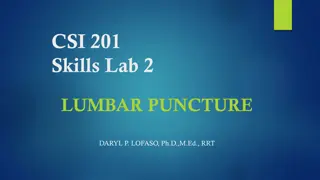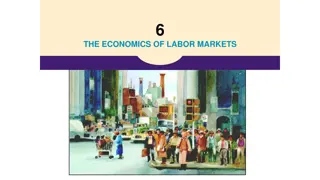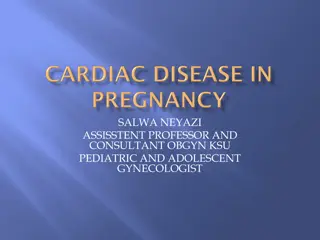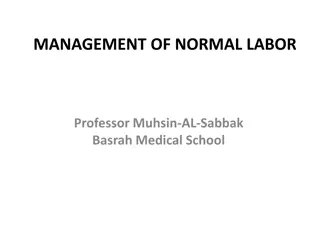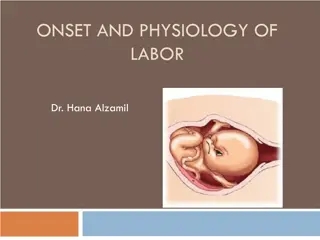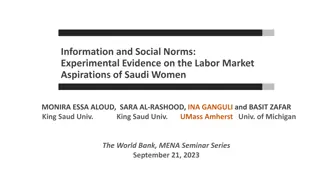Lumbar Epidural Analgesia in Labor: Views of Women in Yogyakarta
Pain management during labor is a crucial aspect of maternal care. This study examines the awareness and acceptance of lumbar epidural analgesia among pregnant women in rural and urban communities in Yogyakarta. Differences in perception between the two groups are analyzed based on socio-economic factors, educational background, and gestational age. Explore the impact of pain relief measures on labor experiences and maternal well-being.
Uploaded on Feb 22, 2025 | 2 Views
Download Presentation

Please find below an Image/Link to download the presentation.
The content on the website is provided AS IS for your information and personal use only. It may not be sold, licensed, or shared on other websites without obtaining consent from the author.If you encounter any issues during the download, it is possible that the publisher has removed the file from their server.
You are allowed to download the files provided on this website for personal or commercial use, subject to the condition that they are used lawfully. All files are the property of their respective owners.
The content on the website is provided AS IS for your information and personal use only. It may not be sold, licensed, or shared on other websites without obtaining consent from the author.
E N D
Presentation Transcript
LUMBAR EPIDURAL ANALGESIA AS A NEW PARADIGM: VIEWS OF WOMEN IN RURAL AND URBAN COMMUNITY IN YOGYAKARTA ICoSI 2019 Iman Permana, Supriyatiningsih, Pramitha Esha Nirmala Dewi
Pain in labor has been problematic for women regardless their socio-economic status (Labor & Maguire, 2008). for most of the women the existence of the pain during labor was considered painful, even after the administration of childbirth training (Melzack, Taenzer, Feldman, & Kinch, 1981). Some women in some cultures believed that pain in labor is a natural sensation and inevitable, thus, the ability to accept and endure it is regarded as a normal condition that come in due process (Umeora & Obuna, 2014) INTRODUCTION
The aim of the pain relief procedure is to minimize the pain to the level in which the pregnant mother is still able to actively participate in the labor process (Labor & Maguire, 2008). Lumbar Epidural Analgesia (LEA) was suggested to provide high-quality pain relief and minimizing side- effects both for maternal and the fetus or on the outcome of labour. with the correct dosage of anesthetical drug and the precise timing, the procedure will not hamper the consciousness level of the mother and maintaining the mother to be actively engaged in the process of delivery (Wong, 2009).
to explore the awareness and acceptance of lumbar epidural analgesia procedure among pregnant women. AIM
METHOD This study was a descriptive analytic using questionnaire. Eighty women consisted of 40 from rural and 40 from urban areas who planned to have delivery process at Asri Medical Center, Yogyakarta Convenience sampling method Students t test and chi-square was utilized to analyze the difference perception between urban and rural groups
No Characteristics Rural Urban P N % N % 1. Age Group 18 22 23 35 >35 Gestational age 37 -40 >40 Socio status Low Middle High Educational Status Elementary school High shool Graduate Gravida Primigravida Multigravida 15 20 5 37.5 50 12.5 4 30 6 10 75 15 0.001* 2. 25 15 62.5 37.5 35 5 87.5 12.5 0,080 3. economic 25 10 5 62.5 25 12.5 5 10 25 12.5 25 62.5 0.002* 4. 15 15 37.5 10 37.5 4 10 27.5 62.5 11 25 0.012* 25 5. 25 62.5 37.5 30 75 25 15 10 0.020*
The age of pregnant women, level of education, social economic status and number of gravida were statistically significant, except for gestational age. Both group also have expectations to have no pain delivery process (p=0.001 and p= 0,002)
Rural Urban N = 40 % N = 40 % Not aware 30 75 15 37.5 Aware 10 25 25 62.5 - As pain reliever in labor 4 18 - First knowledge from doctor/ midwife 6 7 Accept to epidural analgesia 25 62.5 35 87.5
Majority of the respondents in both group 50 (66,75%) were not aware of epidural analgesia. Of the 25 (33,25%) who were aware, 12 (48%) knew it was used to relieve pain in labor and 13 (52%) had first knowledge about epidural analgesia from doctors and midwife at hospital. Limitation A majority of the respondents 65(86,66%) would accept epidural analgesia. There are no information on the source of knowledge and the effort from the HCP
Most of the participants has not been acknowledged adequately to LEA. Nevertheless, majority of participants accept it as an option of mean of pain relief. Health care professional encourages to promote the implementation of LEA to pregnant ladies CONCLUSION



